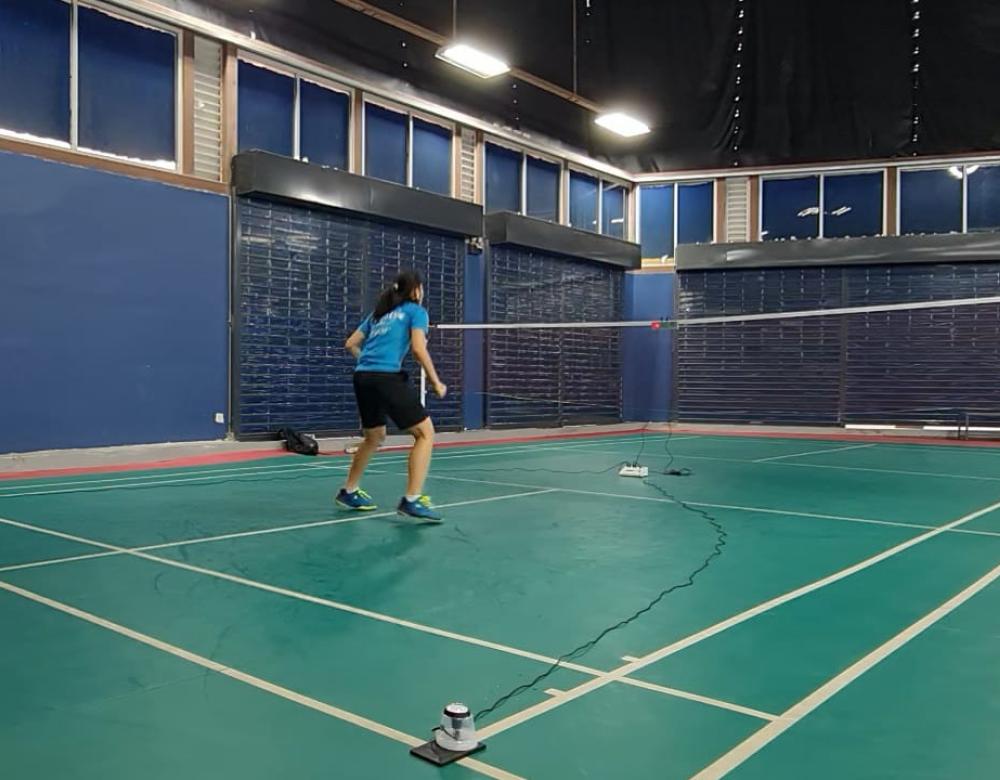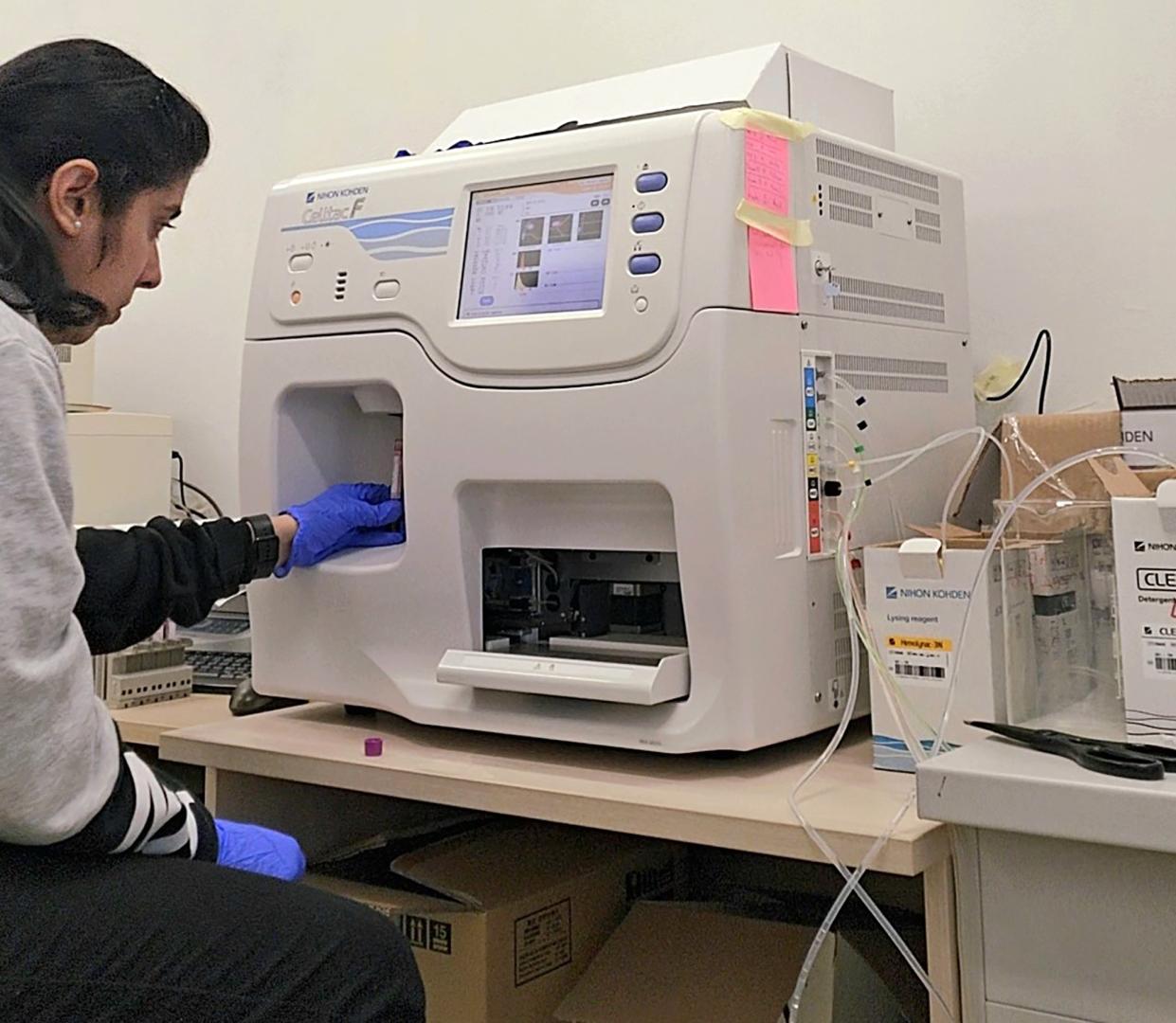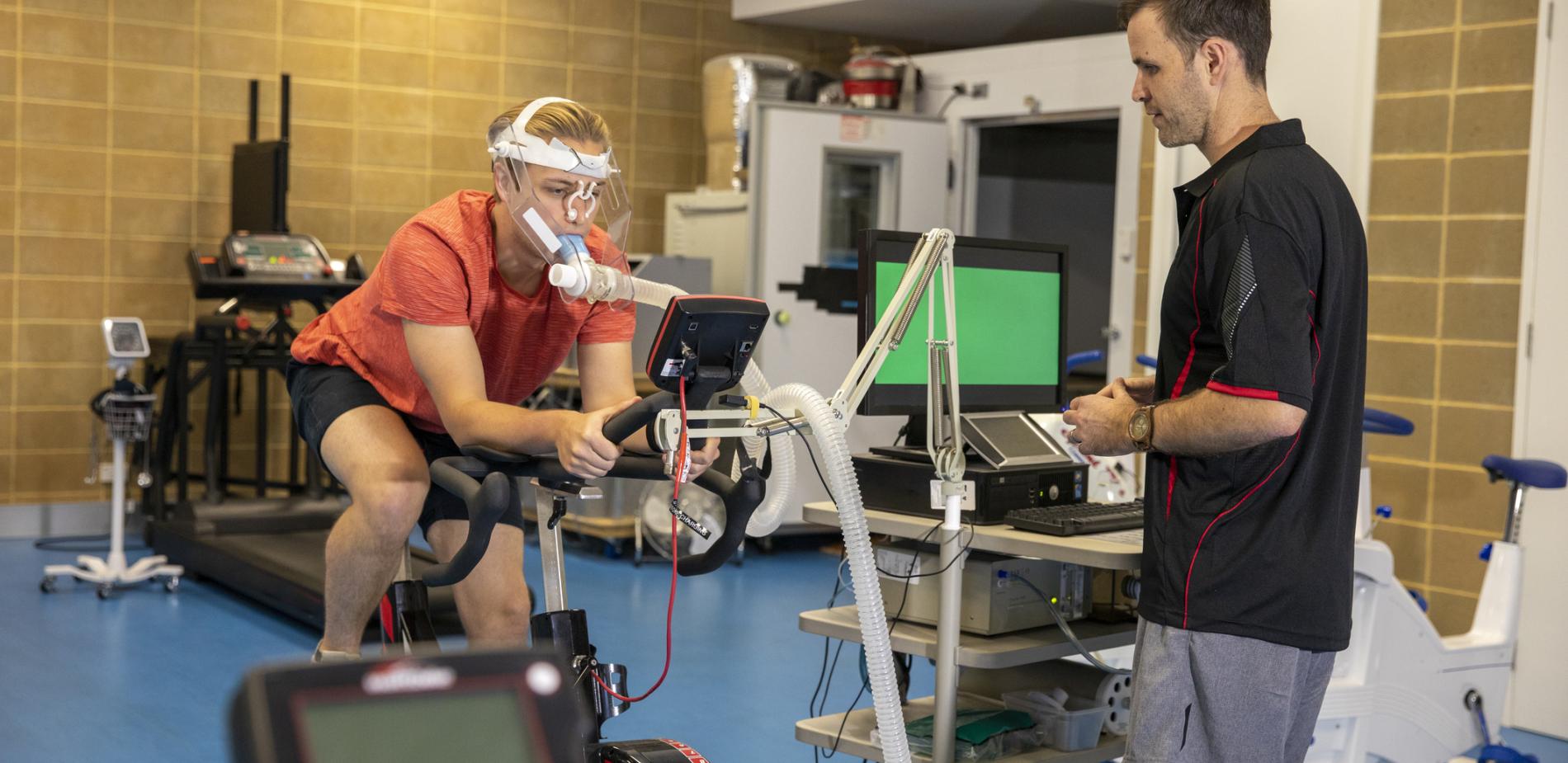
Lactate, lesions, metabolism... science and sport, a rich relationship
What can science contribute to sport? Researchers everywhere are breaking new ground to improve top-level performance or measure the benefits of physical activity for everyone. Some of the “Young International Scientific Talents” invited for a residency at the Cité des sciences et de l’industrie in December 2023 presented some of their projects. Here is an overview.
Young Scientific Talents - Published on
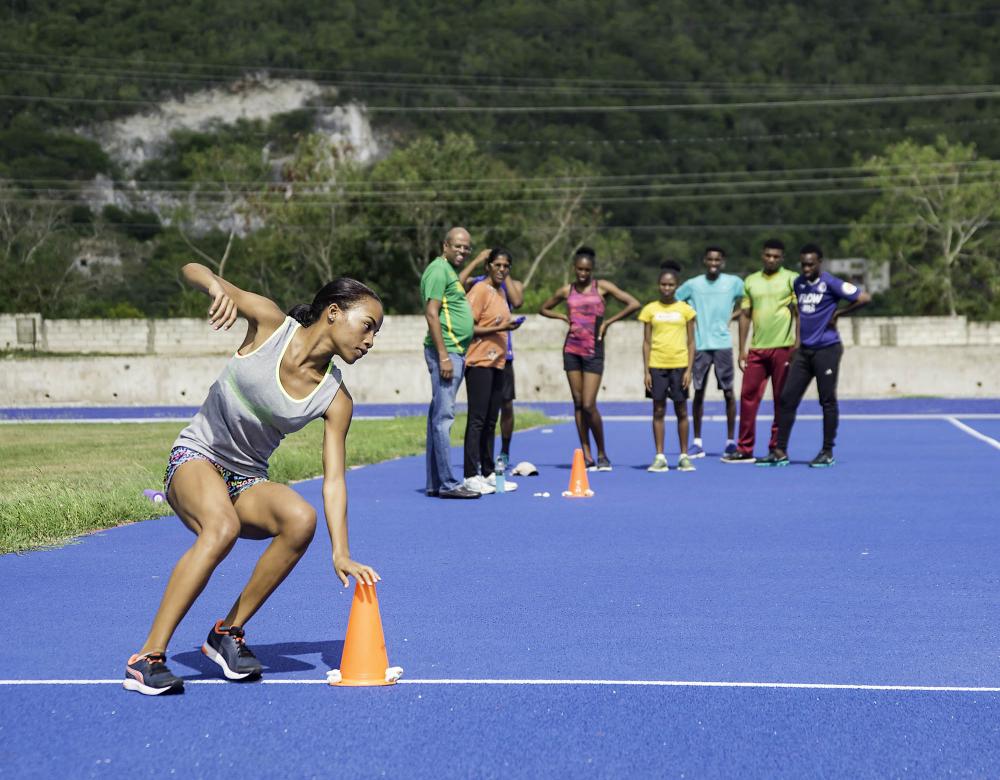
Less lactate, less body fat!
Lactate is of particular concern to athletes, especially in the running events, as its production and accumulation are associated with muscular fatigue. Therefore, to optimize performance it is important to fully understand the biochemical and physiological factors that influence lactate production.
This study aimed to improve this understanding by examining the effects of body fat on basal lactate production. Thirty-five individuals (19 athletes and 16 non-athletes) of similar ethnic backgrounds had their body fat assessed and their blood lactate measured before and after an intense bout of running. Significance was observed for pre-exercise basal lactate in the athletes and in the non-athletes. A 17% increase in body fat in athletes accounted for an additional 2 mmol/L of basal lactate while a 15% increase in non-athletes resulted in 1.5 mmol/L of basal lactate. To conclude, body fat has a significant impact on pre-exercise basal lactate level, possibly affecting the athlete’s cellular metabolic status prior to competition.
Aldeam Facey is a PhD student at the Mona Academy of Sport (university of the West Indies), in Jamaica.
The key role of rest in endurance athletes
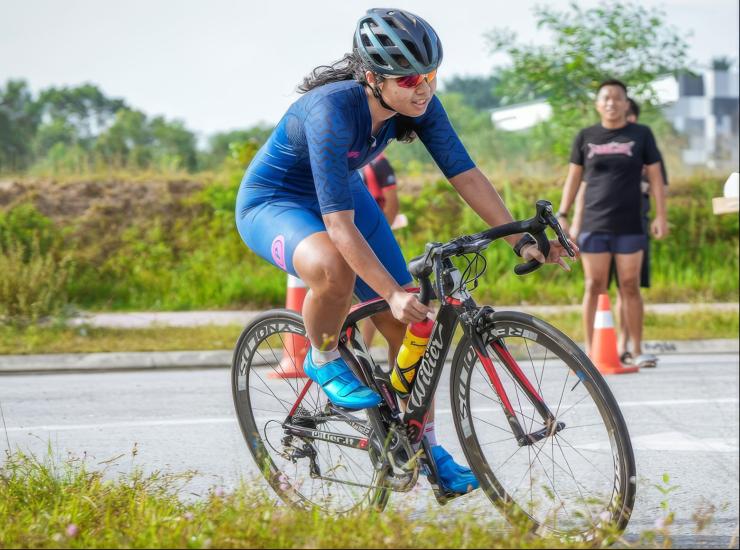
Little is known about the sleep health of endurance athletes in Malaysia. Hence a study of 86 endurance athletes from different endurance sports (average age 25, the majority having over 5 years of training experience), who answered a reliable self-reported questionnaire called the Pittsburgh Sleep Quality Index to measure the sleep quality. It revealed that almost 84% had poor sleep quality.
Insufficient sleep among athletes may lead to a great number of concerns such as reduced cognitive functions (reduced ability to think and react quickly which affects reaction time and accuracy during game). For instance, a study on sleep-deprived tennis players showed a 53% drop in serving accuracy compared to when they had enough rest, highlighting how insufficient sleep can lead to poor decision-making and higher risk of injury among athletes. Particularly female athletes face insomnia due to hormonal factors. In consequence, having a good support system from coaches, families and society enhances athletes’ well-being, developing future highly resilient athletes.
Juliana Johan John is a lecturer at the Tunku Abdul Rahman University of Management and Technology (department of Sport Science), in Kuala Lumpur, Malaysia.
Tai Chi: a gentle pathway for body wellness
Is Tai Chi a far-fetched idea for reducing blood pressure? Not really! In two randomized controlled trials, Tai Chi has indeed demonstrated its superiority over non-mindful moderate-intensity aerobic exercise in reducing blood pressure among prehypertensive and hypertensive patients. Furthermore, when compared to aerobic exercise as a standard care non-drug treatment for fibromyalgia, Tai Chi emerged as equally or even more effective.
What accounts for these results? While traditional aerobic exercises like walking focus only on the body, Tai Chi encompasses a mindful approach by incorporating elements such as mindfulness, focused attention, imagery, and active relaxation. This mind-body engagement gives Tai Chi the upper hand to enhance mental health. A meta-analysis also revealed that Tai Chi surpasses non-mindful exercise in reducing anxiety and depression.
What makes Tai Chi truly remarkable is its inclusivity. The slow, gentle and low-impact nature of this ancient practice makes it a perfect fit for individuals of all ages and fitness levels. Tai Chi has in fact proven its effectiveness in improving functional health and is considered safe for cardiac rehabilitation among patients with coronary heart disease.
Edwin Chun-yip Chin is a postdoctoral fellow at the Department of Sports Science, Chinese University of Honk Kong.
MicroRNAs as pioneers in early muscle strain
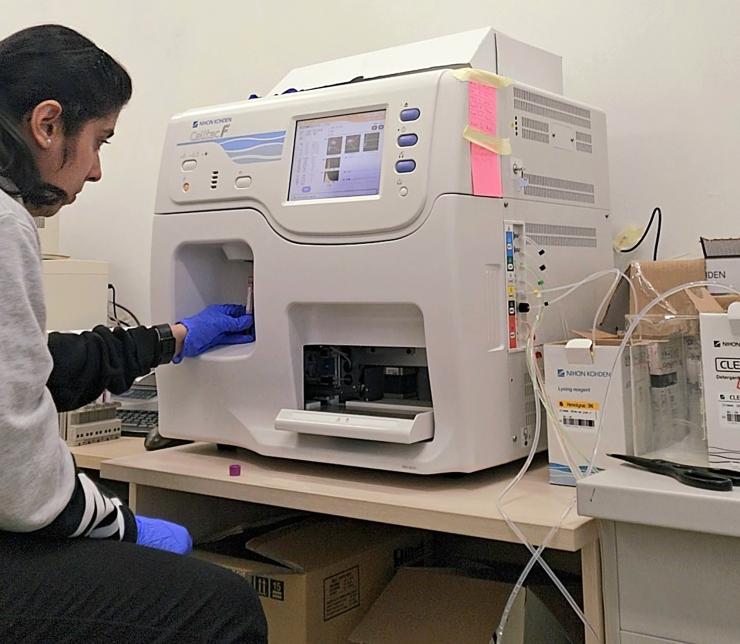
How can muscle damage be detected early before an injury occurs? Over the years, scientific evidence highlights that microRNAs (miRNA) expression changes can be detected earlier in body fluids than conventional muscle damage biomarkers. MiRNAs indeed act as molecular "dimmer switches," fine-tuning gene activity and influencing biological processes.
Engaging in strenuous workouts or sports causes microscopic muscle tears, initiating repair. At the forefront is miRNA-1, a pivotal player in muscle regeneration. Acting as a choreographer, miRNA-1 refines muscle cell responses, ensuring seamless recovery. Post-exertion, miRNA-133 plays a prominent role, aiding muscle repair and mitigating inflammation. Like a backstage manager, miRNA-133 oversees post-exercise restoration, guiding cellular interplay. Then miRNA-206, a rising star, takes the center of the stage during heightened muscle challenges, enhancing strength and fortitude. Similar to a superhero, miRNA-206 safeguards muscle integrity.
Understanding body reactions under stress empowers tailored activities, reducing the risk of injury. The exploration of miRNAs allows personalized exercise approaches, optimizing routines based on molecular insights. Despite research conflicts, miRNAs are promising early indicators and regulators, improving our understanding of human performance and health. In short, many research groups are trying to figure out miRNA expressions in order to detect the early-stage muscle damage.
Farwa Baber is a PhD student at Charles University (Sports Science) in Praha, Czech Republic.
In cricket, abs to protect the front knees
In cricket, spectators tell bowlers that “fast balls” before are not the same as “fast balls” now. What they are not telling them is that even when they go faster, they cannot be faster than a crowd’s insatiable desire for more and better. Coaches tell bowlers that they cannot get injured and if they do, they have to return quickly on the field as if they had never left. What they are not telling them is that many injuries can be prevented if reports are made early. What about the researchers? They know that a straighter knee should yield a faster ball speed. Yet they also know that a straighter knee can lead to more injuries as high forces are transferred through that joint!
In a recent study assessing front knee actions in fast bowlers among junior cricketers in Jamaica, they were found to be bending the knee more on ball release versus keeping it straight. Their ball speeds did not suffer significantly because of this but rather, are comparable to bowling speeds for their age. Could it be that junior bowlers without the pressures of insatiable crowd appetites have figured out how to reduce a risk for injury without compromising the outcome loved by fans? By using greater abdominal strength activation, they have been able to spare the knee but receive similar outcomes. Here is a fine example of the usefulness of biomechanical science...
Alison Facey is assistant lecturer and PhD candidate at the University of the West Indies, Jamaica.
A protocol to combat metabolic syndrome
Defined by the combination of abdominal obesity, insulin resistance, hyperglycaemia, dyslipidaemia and hypertension, the metabolic syndrome is a public health problem. However a physical exercise protocol combining endurance and resistance is proving to be effective in reducing it: that is the aim of the Zengym (endurance-resistance) training programme developed by researcher Mouna Abrougui as part of her STAPS thesis.
To test its effectiveness, Mouna Abrougui recruited 103 sedentary women with metabolic syndrome from Monastir, Tunisia. Comprehensive data was collected for all the women: age, height, weight, hip circumference, lean and fat mass percentages, BMI, heart rate, blood pressure, blood sugar, insulin, cholesterol, etc. Physical fitness tests (static balance, flexibility, muscular strength, scapulo-humeral mobility, aerobic aptitude, etc.) were also carried out.
The training protocol was then offered to 71 women, with a further 32 women in the control group. The 24-week programme, called Zengym, consisted of three weekly training sessions, each lasting 55 minutes: 5 minutes warm-up, 45 minutes muscle strengthening and 5 minutes cool-down.
The result was a marked improvement in anthropological and biological parameters, as well as in physical performance in the ’trained’ group: BMI fell by an average of almost 12%, body fat by a quarter, muscle mass increased by 25%, blood sugar levels fell by almost 6%, blood pressure by almost 20%, etc. The results were impressive. In the 71 women trained, stress and anxiety levels were also reduced.
What next? In view of the encouraging results of the study, Mouna Abrougui hopes to extend this high-intensity programme to a wider public, concerned with reducing their cardiovascular risk.
Mouna Abrougui is a researcher in the sciences and techniques of physical and sports activities at the Institut supérieur du sport et de l’éducation physique in Ksar Saïd, Tunisia.
Real-time feedback for badminton performance
In the fast-paced world of badminton, where milliseconds matter, improving training conditions plays a key role. Hence the development of the Swift-Smart Motion Pattern, a combination of shadow drills powered by Onigoe device, a cutting-edge technology specifically built for badminton footwork analysis. Equipped with sensors, Onigoe proposes simulated match scenarios inspired by real matches, then measures and analyses the player’s movement patterns, reaction times and endurance, providing valuable feedback on possible areas for improvement. The exercise protocol is designed for the whole pitch.
Daphne Ng Chiew Yen is chief coach of Duo Sparks. She is also a professional badminton academy in Malaysia.
